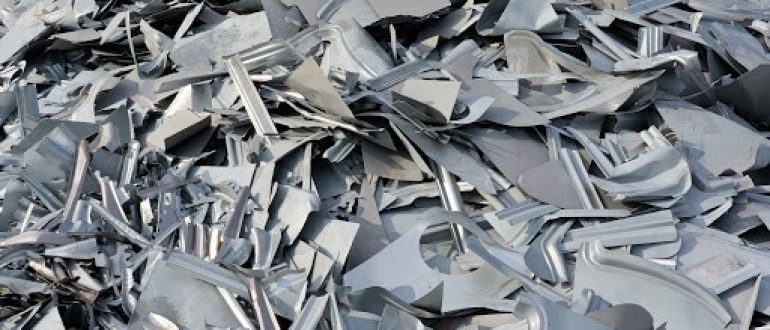Aluminium is a chemical element with the symbol Al and atomic number 13. It is a low-density element – its density is one third that of steel. It is a weak element but readily reacts with oxygen and forms a protecting layer called aluminium oxide once exposed to air.
The main reason for the popularity of aluminium is its lightweight, high strength, and corrosion-resistant nature.
Uses of Aluminium.
Aluminium is used in different industries and almost all types of machines. Some of the most common uses of aluminium are as follows:
1. Frames of the windows of your house are made of aluminium. The light-reflecting ability of aluminium is very beneficial for this purpose.
2. The low density of aluminium makes it suitable for different aircraft and automobiles.
3. Constructors use aluminium in high-rise buildings.
4. Kitchen electronics use aluminium in them.
5. Ships have parts made up of aluminium.
Pros and cons of aluminium scrap in Sydney:
Pros
Aluminium has several advantages that make it suitable for automobile industries and other equipment. These advantages include.
- Lightweight
- Malleability
- Its nonmagnetic nature
- Being soft and durable.
Cons
It also has some disadvantages, like the malleable nature of aluminium can cause denting and scratching. It is heat sensitive and is challenging to use. A significant disadvantage of aluminium over steel is the cost of aluminium about three times more than the cost of steel.
Aluminium scrap in Sydney
It is the most crucial material in the recycling process. About one-third of aluminium is gained from scrap. There are two types of aluminium scrap in Sydney: new scrap and old scrap.
New scrap is the term used to define the scrap coming from production processes. The term old scrap is used to describe the scrap coming after disposal by consumers.
Health risks of aluminium scrap in Sydney
Just like any material, there are some risks involved in processing aluminium. Aluminium scrap in Sydney can affect a person through its contact with eyes, skin, or when it is inhaled. It can cause serious health issues that can be as simple as a flu-like fever called the metal fine fever. It is characterized by a metallic taste, headache, fever, chills, chest tightness, and cough. It usually subsides in a day or two.
Fine dust particles of aluminium can cause scarring inside the lungs, resulting in shortness of breath.
Aluminium powder ishighly flammable and can lead to fire at anytime.
Adverse effects of aluminium include neurotoxicity affecting both the central and peripheral nervous system; it may cause breast cancer or Alzheimer’s disease. Intake of a large amount of aluminium dust can cause coughing and other serious lung problems.
Prevention of aluminium hazards
Proper handling of aluminium products when handling, mixing or receiving the materials is essential to prevent any aluminium-related health hazards. Failure to use appropriate melting and casting methods can lead to devastating outcomes.
Those working with the metal should wear a respirator and proper clothing. Wearing gloves, gowns, masks, respirators, fitting headcaps, and footwear are a must. Eye protection is critical as aluminium enters the body through the eyes. As aluminium is a very toxic substance, it is better to wear goggles and a face shield for better protection and it is necessary to washproperly once you come out of the room to remove any traces of aluminium on your hands, face, or any other body part.
Workplace modifications are always better than having proper clothing. The areas where aluminium scrap in Sydney is placed should be properly vented where one needs to know how muchaluminium is released and whether it is high enough to lead to a fire.
Along with all these precautions, it is essential to educate the workers about aluminium and the health hazards caused by it. For this, proper seminars with discussions should be scheduled. A notice of warning should be placed on every door of the room where aluminium work is taking place.
Tests to evaluate exposure to aluminium.
There are different ways to find out whether a person is exposed to aluminium or not. The first method is to measure the amount of aluminium in the air; these air samples are collected from the area.
If a person is suspected to have been exposed to aluminium. They should immediately inform their doctor and get the necessary examination done. The most critical tests for aluminium exposure in a person include chest x rays and lung function tests. Apart from this, a detailed past medical and occupational history is very crucial.
How to deal with an aluminium exposure?
If a trace of aluminium enters the body through the eyes it is important to lift the upper and lower eyelids and wash with enough water for at least 15 minutes and call emergency.
When aluminium dust is inhaled, start rescue breathing and call emergency.
In case of contact with skin, remove all dirty clothes and wash thoroughly with soap and a copious amount of water.
Always have proper clothing and a controlled setting while using aluminium. The consequences of exposure to aluminium scrap can take a serious turn which is always better to stay aware of these hazards and prevent them. The best way to do so would be to have professionals deal with Aluminium scrap in Sydney.
Disclaimer: This is a generic Information & post; content about the services can be changed from time to time as per your requirements and contract. To get the latest and updated information, contact us today or visit our website.




